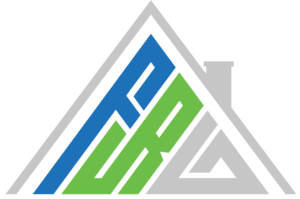How to Install Roof Shingles Properly?
Jun 09, 2025
At Freedom Roofing Group, we specialize in helping our homeowners make informed roofing decisions. Understanding how to install shingles properly will ensure structural integrity, weather resistance, and long-term value of their property, as well as long-term value of the home or building itself.
Roof shingles don’t just serve as decorative touches – they serve an integral role as environmental barriers; installed properly, they can protect for decades; done wrong, they could cause leaks, mold growth, or costly repairs down the line
In this article, you’ll see technical and practical considerations behind installing them the right way!
Let’s go through each step in detail, clearly, efficiently, and without taking shortcuts.
mes mes It is crucial that before we dive into the “how”, we understand “why.” Roof shingles provide more than aesthetic value alone: They protect roofs against moisture damage as well as provide insulation benefits such as soundproofing.
- Water resistance is achieved by channeling rain and snow away from the roof surface.
- UV protection will protect the structure of your home against UV-induced damage.
- Insulation offers numerous advantages, helping manage indoor temperatures more effectively.
- Wind resistance can be achieved when installed correctly with proper fasteners.
Improper installation can void manufacturer warranties, increase utility bills, and lead to roof failure in storms if not done properly. That is why understanding how to install roof shingles correctly is so essential.
Key Materials and Tools You Will Need
Installing roof shingles requires laborious effort and precise tools, so if you decide to tackle it on your own, here is what you’ll need:
Essential Tools: A roofing nail gun or hammer, a Utility knife, a roofing shovel or pry bar, measuring tape, and a chalk line should all be present when working at height. In addition, a safety harness and ladder may also be helpful.
Straightedge or Framing Square?
Asphalt shingles (or your desired type) are among the various materials to choose from for roofing needs.
Nail strips for roof decking
Underlayment
Drip edge/starter strip shingles to flash valleys, chimneys, and vents, ridge cap shingles
Although this list may appear extensive, that’s because installing roof shingles can be a complex and tedious process–hence why so many homeowners seek professional assistance like Freedom Roofing Group. Our step-by-step process of how to install shingles will walk you through each step in this installation process.
Before installing new shingles, a clean surface must be created for installation. Remove all old shingles, nails, and underlayment to provide an even surface. This step ensures a strong foundation for new materials.
Check and Repair Roof Deck
To avoid future shingle jobs being undermined by compromised bases, inspect and repair the roof deck regularly for signs of rot, warping or any structural damage to ensure its stability and optimal function. Replace any compromised plywood as soon as you detect issues – failing to do this may compromise any job performed on it!
Install Drip Edge
This metal flashing is essential in protecting roof edges against water infiltration. Start by attaching it along the eaves, then over the underlayment along rakes for maximum effectiveness.
Install an Underlayment
Select either felt paper or synthetic underlayment and install it starting at the lowest edge of the roof, working your way upwards while overlapping each row by at least 2 inches to create an effective secondary moisture barrier. This step also serves to protect the shingles themselves against weathering damage.
Install Starter Shingles
Starting shingles are narrow strips installed around the perimeter. They serve as anchors for the first course of shingles, providing secure anchorage against wind uplift.
Launch Your Shingle Installation
Now is when the real work begins; learning to properly install roof shingles starts here!
Step One of Installing Roof Shingles Properly
Begin at the base edge of the roof.
Align the first row of shingles directly above the starter strip.
Make use of a chalk line as guidance.
At each shingle tab slot, drive four to six nails into the decking so they penetrate it and ensure they penetrate all shingles.
Stagger each subsequent row so seams don’t align perfectly.
Flash Metal Flashing around Vents and Valleys
Metal flashing should always be added around valleys, chimneys, and plumbing vents to prevent water seepage into vulnerable areas of a structure. This helps protect them against leakage.
Once your roof reaches its peak, complete its look by installing ridge cap shingles. These specially-made roof coverings cover the ridge for an attractive, watertight finish that provides a clean look and keeps water out.
Common Mistakes to Avoid
Even minor errors during installation can have far-reaching repercussions, as we often see at Freedom Roofing Group:
Misaligning Shingles: This could result in leaks and visual inconsistencies requiring additional repair work from us at Freedom Roofing Group.
Underdriven or overdriven nails: Nails should lie flush against the shingle without breaking its surface.
Poor ventilation: Lack of adequate attic ventilation can overheat shingles and shorten their lifespan significantly.
Avoid Skipping Flashing: Valleys and roof penetrations require flashing; don’t improvise using caulk or extra shingles as an improvised solution.
Each of these problems can be avoided through careful planning and attention to detail, but professional assistance may often be the wiser choice.
How Long Will Roof Shingle Installation Take?
Timeframes may differ depending on roof size, pitch, weather conditions, and crew experience; for an average single-story home: For DIY projects, 3-7 days for a completed roof, while professional teams usually need between 1 and 2 days.
Remember, accuracy and safety should come before speed when installing roof shingles yourself; poor installation can cause long-term headaches if performed improperly, even quickly.
Is DIY Roof Shingle Installation Worth It?
While learning how to install roof shingles yourself may reduce upfront labor costs, there are important tradeoffs you need to be aware of:
Reduce Cost
Limited warranty
Coverage and higher risks than with professional contractors, taking less experience before embarking upon learning how to install Roof Shingles.
Available when installation may save upfront labor costs upfront but some essential trade-offs are necessary. But these trade-offs must be considered:
Increase personal liability exposure
Bulk pricing of materials is unavailable
Professional roofing installation often yields greater long-term value. At Freedom Roofing Group, our installations not only come with our guarantee but also adhere to manufacturer-certified methods that meet warranty standards.
Why Freedom Roofing Group?
Roofs are more than nails and shingles–they require trust, transparency, and craftsmanship. At Freedom Roofing Group, our on-the-ground experience, safety certification, and dedication to detail set us apart. Here is what separates us:
- Fully licensed and insured.
- Transparent pricing without any hidden fees
- Work performed under warranty is guaranteed and covered by the warranty.
- Highly trained crews employing industry-standard practices.
- Services available to address emergency and storm damage include roofing repairs.
Our approach is focused not just on getting the job done, but getting it done correctly the first time around.
Signs It May Be Time to Contact Professionals
When contemplating whether it would be more cost-effective to install the shingles yourself, any of the following signs indicate it might be wiser to contact a pro instead: “Wide roof pitch
Complex rooflines or valleys present problems when it comes to snow removal.
- Lack of adequate safety equipment
- Uncertainty regarding local building codes
- Concerns About Insurance or Warranty Requirements
Freedom Roofing Group provides free consultations to help you determine the appropriate course of action – be it full installation or partial replacement. Our specialists offer their advice with no strings attached.
Final Thoughts
Effective roof shingle installation involves more than simply following the steps outlined here; it requires precision, planning, and the appropriate tools, but most importantly, it takes a commitment to getting every detail perfect from nailing down to installing ridge caps.
If your goals involve long-term performance and property protection, professional assistance shouldn’t be considered just an extravagance but as an investment.
Are you in search of expert roofing solutions for your home? Reach out to Freedom Roofing Group now for a complimentary consultation and experience roofing done right! Our team can guarantee quality, efficiency, and peace of mind from beginning to end.

